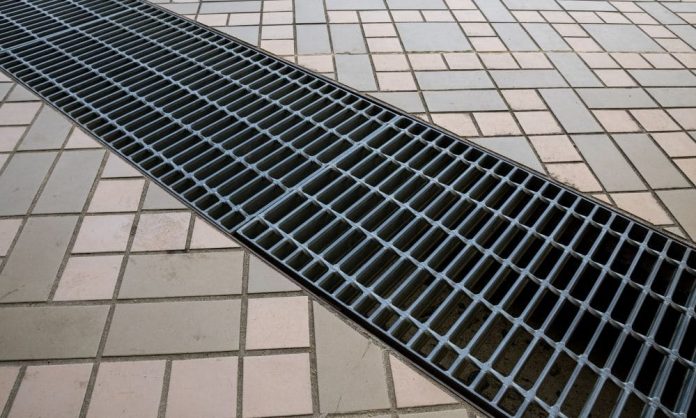Commercial and residential systems require trench drain systems to control the movement of water and waste and protect a building’s stability. These systems also hold groundwater and prevent it from oversaturating a building’s foundation.
While installing trench drains on your property can be an excellent investment, some mistakes and factors may cause them to fail. If this happens, you should be worried because water will flow over the trench drain and damage your property. The earlier you have this problem fixed, the better. Here are five common reasons why trench drains fail:
Poor-quality materials
The materials used to construct a trench drain can make it vulnerable to several issues. Gutters are made from several materials, including fiberglass, steel, plastic, and polymer concrete. If these materials become porous, bacteria will stick to them, start growing, and cause odor issues. Porous materials can also trap dirt, clog the drain, and cause flooding.
A quality trench drain should be corrosion-resistant, non-porous, and have a water-resistant surface. Regularly cleaning the drainage system through sweeping can keep it in good condition and prevent problems such as clogging. It is also advisable to purchase drains made of materials that don’t become porous. Alternatively, you can protect your system from damage by installing a filter that blocks dirt and debris from entering the drain. You can also coat the drain with sealant to prevent bacteria from sticking to it.
Concrete and steel are the most common materials used to make these devices. These materials are very strong, but they have their weaknesses. Concrete may crack over time due to weather exposure, and you can protect it with sealant. Steel is susceptible to rust, and you can protect it with a coating. With these tips in mind, you can ensure that your trench drain lasts for as long as you need it to.
Not Following the Manufacturer’s Instructions and Guidelines During Installation
Manufacturers usually give instructions for installing trench drains to ensure they are installed correctly and safely. If you don’t follow these guidelines, you’ll increase your risk of having problems with them. One of the most common mistakes people make when installing these accessories is failing to leave enough room between the bottom of the pipe and the finished grade.
This leads to clogging and may endanger the lives of pedestrians or equipment being used on the site. Another mistake is using the wrong-sized pipe. Your drain could be used to convey anything from stormwater to sewage. Therefore, it’s vital to ensure you’re using a suitable-sized pipe to meet the flow rate requirements for the site. For example, a large municipal pipe would not be ideal for a private home, even if it was the correct length.
If you feel uncomfortable or uncertain about installing your new trench drain, it would be best to get a contractor to do it for you. These technicians are familiar with all of the safety regulations, codes, and best practices for installation and will advise you on the best way to install your new drain. They’ll also ensure that it complies with all of the local codes and regulations, so you don’t have to worry about that.
Inadequate Slope for Proper Drainage
After a new trench drain is installed, it must be adequately sloped to ensure that the water drains out of the pipe and into the storm sewer or sanitary sewer. This slope is usually between 1/4” and 1/2” per foot. If it isn’t maintained, sediment buildup will block the flow, leading to flooding, erosion, structural damage to the pipe, or other serious problems.
The proper way to install a trench drain is to first dig a shallow trench by hand or with an excavator and remove any large rocks or roots. Once that’s done, you can place your new drain in position and secure it on both sides with concrete blocks. You can also connect it at points above grade level for additional support.
Improper Backfilling Around the Drain
Once your trench drain is in place, you will need to backfill the area with clean fill dirt that has been appropriately screened to remove stones, roots, and other debris. If you don’t do this, the debris in the soil can clog your drain, causing sediment to back up into your home and causing other damage. To avoid this, only use clean fill dirt when you backfill. When filling the trench, make sure you distribute the dirt evenly to form a slope that directs water toward the drain.
Once the area is filled, you will need to compact the soil by driving over it with a heavy truck like a cement mixer. This will ensure that the drain is properly sealed and watertight. A few different methods can be used for backfilling a trench drain. One of the most popular methods is to use a hand tamper and shovel. Another option is to use a backhoe or auger machine for larger jobs.
Poor Maintenance
After installation, you will need to regularly maintain your trench drain to ensure that it remains clear of debris. This will help prevent the drain from clogging, which can cause water to back up into your home or cause other problems. You should repair any damage to the drain immediately after it occurs. If you cannot perform maintenance on your own, you may want to hire a professional contractor to inspect and repair your system when necessary. These contractors are experienced in performing maintenance and can quickly identify and fix any problems.
The Bottom Line
Jonite trench drains are vital accessories that can protect your property from the negative impacts of rainwater. By looking out for signs of drain failure, you’ll maximize their functionality and protect your property for many years to come. When choosing a product, make sure it meets your needs and is suitable for your property.
Read More: Achilles Pugh: Famous Character in Printing Trade







